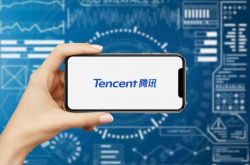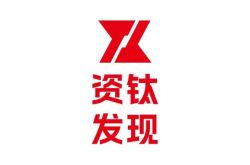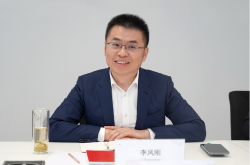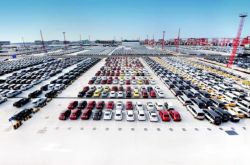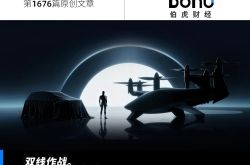Will Export of Electric Passenger Vehicles Encounter a 'New Hurdle'?
![]() 11/14 2025
11/14 2025
![]() 569
569
The new policy is anticipated to reshape China's automotive export landscape, foster a robust and sustainable export ecosystem, and bolster the global brand building and long-term development of China's electric vehicles.
A single announcement signifies a crucial turning point for China's new energy vehicle exports.
On September 26, the Ministry of Commerce website announced the implementation of export license management for battery electric passenger vehicles. The announcement stated that to facilitate the healthy growth of new energy vehicle trade, in accordance with the relevant provisions of the Foreign Trade Law of the People's Republic of China, the Ministry of Commerce, the Ministry of Industry and Information Technology, the General Administration of Customs, and the State Administration for Market Regulation have decided to enforce export license management for battery electric passenger vehicles, with formal implementation commencing on January 1, 2026. "This implies that all exports of battery electric passenger vehicles must obtain export licenses from the Ministry of Commerce or its authorized agencies, and unauthorized exports will be prohibited," wrote Wu Songquan, a senior chief expert at the China Automotive Technology and Research Center and chief engineer of the China Automotive Strategy and Policy Research Center. He highlighted that this measure is expected to restructure China's automotive export framework, establish a healthy and sustainable export ecosystem, and support the global brand building and long-term development of China's electric vehicles.
From 'Scale Expansion' to 'Quality Enhancement'
Since 2021, China's automotive exports have witnessed rapid growth.
According to the China Association of Automobile Manufacturers (CAAM), in 2021, China's automotive exports exceeded the long-standing benchmark of around 1 million vehicles for the first time, reaching a total of 2.015 million units. In 2022, exports surpassed 3 million units for the first time, totaling 3.111 million units, a year-on-year increase of 54.4%. In 2023, while China's annual automotive production and sales both exceeded 30 million units, automotive exports also surpassed Japan with 4.91 million units, making China the world's largest automotive exporter. In 2024, growth remained robust, with annual automotive exports reaching 5.859 million units, maintaining the top position in global automotive exports. CAAM noted that Chinese automakers' overseas expansion efforts have continued to yield results, with rapidly increasing export volumes becoming a significant contributor to the growth of China's total automotive production and sales.

However, the rapid growth in scale conceals underlying concerns. Recently, the State Administration for Market Regulation stated that China's automotive exports currently face increasing demands for product diversification and personalization due to differences in climate, road conditions, economic levels, and consumer habits in exporting countries. Additionally, overseas compliance requirements and regulatory inspections for type approval, environmental regulations, and data security are becoming increasingly stringent. China's automotive exports are transitioning from a 'scale expansion' phase to a 'quality enhancement' phase.
"In recent years, China's exports of battery electric passenger vehicles have demonstrated rapid growth. Statistical data shows that export volumes increased from 940,000 units in 2022 to 1.65 million units in 2024 (including second-hand vehicles and low-speed electric vehicles). From January to August 2025, export volumes have already exceeded 1 million units," said Wu Songquan. He believes that amidst the global automotive industry's accelerated transition to electrification, China's new energy vehicle exports have become a significant driver of foreign trade growth. However, issues arising from fragmented export entities and extensive business models have become increasingly prominent over the years, impeding the industry's healthy development and negatively impacting the overall reputation of 'Made in China.' At this critical juncture, encouraging automotive manufacturing enterprises to fully lead the export business of their own-brand battery electric passenger vehicles provides crucial momentum for upgrading export quality.
According to the document released by the Ministry of Commerce, on one hand, export license management will be enforced for goods classified as 'other passenger vehicles with vehicle identification numbers (VIN codes) equipped solely with drive electric motors' (reference customs commodity code: 8703801090). On the other hand, conditions for enterprises applying for export qualifications, management methods, application procedures, and the issuance of export licenses shall adhere to the relevant provisions of the 'Notice from the Ministry of Commerce, Ministry of Industry and Information Technology, General Administration of Customs, General Administration of Quality Supervision, Inspection and Quarantine, and China National Accreditation Service for Conformity Assessment on Further Standardizing the Export Order of Automobile and Motorcycle Products' (Shang Chan Fa [2012] No. 318) (hereinafter referred to as the 'Notice'). Customs inspections of exported battery electric passenger vehicles will be based on the currently valid 'Catalog of Import and Export Commodities Subject to Compulsory Inspection.'
"The 'Notice' is a pivotal document for standardizing China's automotive export order and promoting high-quality automotive exports, and it remains effective to this day," Sun Xiaohong, Secretary-General of the Automobile Internationalization Professional Committee of the China Chamber of Commerce for Import and Export of Machinery and Electronic Products, told the media. The inclusion of battery electric passenger vehicles in export license management is a significant measure to align with the healthy development needs of electric vehicle exports and high-quality participation in international competition.
Closing Loopholes and Standardizing Export Order
Currently, while a substantial number of Chinese automobiles are 'going global,' issues persist regarding inconsistent product quality, and even some unregulated manufacturers are involved.
According to Cui Dongshu, Secretary-General of the China Passenger Car Association, the export products mentioned in this document with the 'customs commodity code 8703801090' were primarily low-speed electric vehicles in earlier years when a corresponding regulatory system had not yet been established. However, in recent years, 70% of these vehicles have been produced by regulated complete vehicle manufacturers, with an average price of approximately $20,600. Only a small portion consists of products classified under 87388090 that do not require VIN codes, with an average price of just $2,050, which is 10% of the price of mainstream regulated products.
Cui Dongshu directly stated that these low-speed electric vehicles feature simple structures and technologies, with most not adopting the four major processes of traditional automobiles. Their bodies are mostly made of simple sheet metal or fiberglass (approximately 1-2 millimeters thick), equipped with simple motors, controllers, and lead-acid/lithium batteries (with a high proportion of lead-acid batteries, which are low-cost but have short lifespans). Their technological levels are far inferior to those of traditional fuel vehicles and high-end new energy vehicles.
Globally, emerging markets such as Southeast Asia, Africa, and the Middle East are key export regions for low-speed electric vehicles. Thailand allows low-speed electric vehicles to use motorcycle license plates, Vietnam includes them in its 'zero-tariff' list, the European Union will classify low-speed electric vehicles as 'micro-mobility devices' starting in 2026 and provide subsidies for vehicle purchases, and the U.S. 'Micro Electric Vehicle Safety Act' exempts compliant models from insurance fees. These market demands and policy incentives have made Chinese low-speed electric vehicles highly competitive, resulting in large export volumes. However, at the same time, issues of disorderly export markets in these regions are prominent. Cui Dongshu stated that some non-automotive manufacturing enterprises or unauthorized operators export low-quality vehicles through a 'bulk procurement + simple modification' model, even pushing inventory products from domestically struggling automakers overseas. Some enterprises, in a bid to seize market share, adopt low-price dumping strategies, neglecting product quality and after-sales service, seriously damaging the international reputation of 'Made in China.'
"The root cause of these disorders lies in the lack of targeted license management for the export of battery electric passenger vehicles. The existing regulatory framework insufficiently constrains unauthorized entities, failing to block the low-quality export chain at its source," Cui Dongshu believes. The implementation of export license management will close loopholes for unlicensed exports through strict qualification thresholds. It can directly restrict the export rights of unauthorized entities, avoiding quality control issues arising from 'middlemen earning price differences,' while ensuring that exported electric passenger vehicles comply with national safety and technical standards. By controlling quality at the source, it completely eliminates the possibilities of 'exports by unqualified enterprises' and 'substandard products going overseas.'
Who Exports, Who Is Responsible
It should be emphasized that the introduction of this license system is not merely to 'choke' the export of Chinese electric passenger vehicles but aims to establish a full-chain regulatory system to prevent disorderly competition and risks.
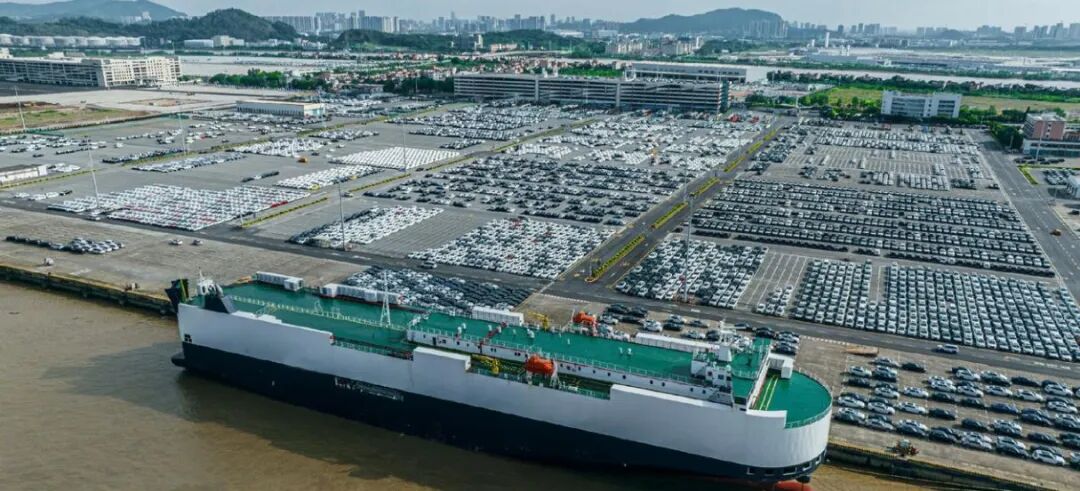
According to Cui Dongshu, this license system continues the mature framework of the 2012 'Notice on Further Standardizing the Export Order of Automobile and Motorcycle Products,' requiring enterprises to have overseas after-sales maintenance service networks (e.g., first-class enterprises need to have over 50 service points), strengthening the 'who exports, who is responsible' accountability mechanism. On the other hand, customs inspections of exported battery electric passenger vehicles will be based on the currently valid 'Catalog of Import and Export Commodities Subject to Compulsory Inspection,' achieving linkage between 'license issuance' and 'customs inspections' and ensuring full-chain supervision.
"Enhancing product adaptability to overseas markets and ensuring after-sales service are the core advantages of automakers directly leading exports," said Wu Songquan. Many automakers have adopted agency sales and service models overseas, leading to issues such as sparse maintenance networks, insufficient charging facilities, delayed spare parts supply, and slow after-sales service responses, affecting brand reputation and market competitiveness. After the implementation of the license system, automakers will directly operate exports, enabling localized adaptation and sustained service guarantees. He cited examples: some automakers can emphasize fast-charging performance in Europe and optimize range in Southeast Asia, reflecting precise market strategies. Another automaker may choose to establish user service centers in Europe, providing value-added services such as intelligent driving upgrades in addition to regular maintenance, significantly enhancing user stickiness.
Wu Songquan suggested that on this basis, automakers will integrate overseas markets into their value chain systems, increasing research and development efforts to improve products for different markets, achieving 'customized' solutions. Simultaneously, automakers can build full-cycle service networks, including local spare parts warehouses, professional team training, multilingual customer service, and extended warranty policies, providing seamless experiences for users, shaping professional and high-end brand images, and forming sustained positive word-of-mouth cycles.
Furthermore, achieving full coverage of export license management in the automotive sector will strengthen interdepartmental and government-enterprise collaboration. "The multiple conditions that automotive enterprises must meet for exports involve management systems spanning the Ministry of Commerce, Ministry of Industry and Information Technology, General Administration of Customs, and State Administration for Market Regulation, covering license applications, production access, product certification, recall supervision, and export inspections, forming a multi-departmental collaborative and full-chain regulatory framework," said Wu Songquan. He believes that traditional decentralized management models cannot comprehensively grasp enterprise dynamics, whereas the current mechanism, with automotive manufacturing enterprises as the primary responsible parties for exports, enables full-process traceability from production to sales. Meanwhile, leveraging enterprise market information feedback, regulatory authorities can keenly capture overseas market and policy changes, optimizing policies in a timely manner. Wu Songquan stated that this government-enterprise collaborative governance model enhances the effectiveness and targeting of policy implementation while avoiding excessive intervention in market behaviors. Especially in addressing international trade barriers, a unified and standardized export management system helps form industry synergy, better safeguarding the overall interests and international image of China's automotive exports.
No Direct Impact on Second-Hand Vehicle Exports
This year in May, the circulation of 'zero-mileage second-hand vehicles' both domestically and internationally sparked considerable controversy. Consequently, following the announcement of the electric passenger vehicle export license system, some wondered whether it was connected to regulating the export of second-hand vehicles. In reply, industry experts interviewed by the media clarified that the license system would not directly affect second-hand vehicle exports.
Sun Xiaohong informed the media that, as per the announcement, HS8703801090 (other passenger vehicles powered solely by electric drive motors and bearing vehicle identification numbers) pertains to new vehicles. The classification for used vehicles is HS8703801010 (used other passenger vehicles powered solely by electric drive motors and bearing vehicle identification numbers), which was previously included in the license catalog. This means that the implementation of license management for exports of pure electric second-hand vehicles actually preceded that for new vehicle exports.
"The export of substantial quantities of 'zero-mileage second-hand vehicles' has led to disorderly competition in overseas markets, harmed consumer interests, and severely tarnished the brand image of Chinese automobiles," Sun Xiaohong noted. According to her understanding, numerous automakers have invested heavily in human, material, and financial resources to strictly control the outflow of their 'zero-mileage second-hand vehicles,' thereby effectively ensuring the healthy development of their export operations.
So, how should automakers modify their export strategies to adapt to the new license system? Wu Songquan offered four recommendations: Firstly, concentrate on key markets during the export process, adopt a cautious and steady strategy, and avoid a one-size-fits-all approach. Prioritize service quality, enhance after-sales systems, and bolster brand development. Secondly, reinforce compliant operations, improve quality management and access certification, and strengthen traceability system capabilities that span the entire chain from research and development to after-sales. Thirdly, intensify market adaptability research and development for exported products in overseas markets, with a focus on enhancing localized adaptation capabilities in response to variations in climate, road conditions, usage habits, and regulations. Finally, systematically establish overseas service networks, set up local after-sales centers, spare parts warehouses, and training systems in key markets, and foster brand loyalty and reputation through professional and efficient services.
"Only those enterprises that proactively comply, continually innovate, and deeply cultivate overseas markets can flourish in international competition. China's new energy vehicle industry is also anticipated to undergo a strategic transformation from scale expansion to quality enhancement through this, truly advancing towards a new stage of high-quality development marked by brand premiumization, globalized operations, and sustained competitiveness," Wu Songquan remarked.
Note: This article was initially published in the 'Hot Topics' column of the November 2025 issue of 'Auto Review' magazine. Stay tuned for more.
Image: From the Internet
Article: Auto Review
Layout: Auto Review

